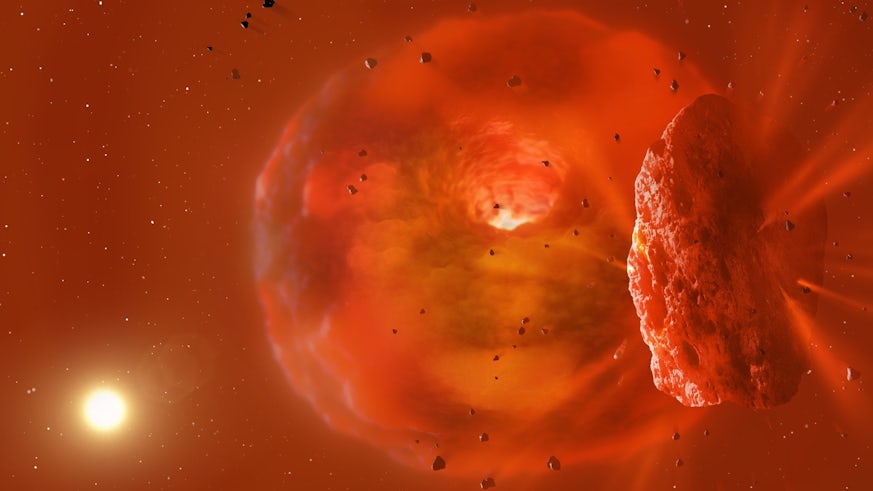Planetary collision in distant solar system reveals new cosmic object
13 October 2023

Astronomers have for the first time observed the collision of two ice-giant planets in a distant solar system, a process they believe planet Earth underwent when it was just a few million years old leading to the creation of our moon.
The international team, which included an expert from Cardiff University’s School of Physics and Astronomy, says the collision has revealed the signature of a new type of astronomical object - a synestia, which is composed of a cloud of molten and vapourised rock and shaped like a doughnut.
Their findings, published in Nature, have shown that the synestia resolves the mystery of a star fading unexpectedly, revealing how the fading occurred after a collision between two planets orbiting the distant star.
The study started with an alert from the All-Sky Automated Survey for Supernovae (ASAS-SN) that a star had unexpectedly dimmed. The team suspected this to be from a planet orbiting that star.
Dr Edward Gomez, one of the paper’s co-authors and an honorary lecturer at Cardiff University’s School of Physics and Astronomy, said: "After the alert, we decided to take a longer look at this star with the Las Cumbres Observatory (LCO) global telescope network. This revealed the light from the star was dimming in an wholly unexpected way.”
Lead author of the study, Dr Matthew Kenworthy from Leiden Observatory, added: “Out of the blue, an astronomer on social media pointed out that the star brightened up in the infrared over a thousand days before the dimming happened. I knew then that this was an unusual event."
The team believe that two ice giant exoplanets collided together, producing the infrared glow which was picked up by the Near Earth Object Wide Field Infrared Survey Explorer (NEOWISE) satellite. The expanding debris cloud from the collision then moved in front of the star three years later and caused the star to dim in brightness at visible wavelengths.
Dr Gomez added: "Tying those two parts of the puzzle together has really made this a fascinating discovery.”
Over the coming years, the cloud of dust will start to smear out along the orbit of the synestia, and it will be possible to detect light from this cloud with both ground-based telescopes and the James Webb Space Telescope.
The team’s observations were taken with Las Cumbres Observatory, which has its education hub based at Cardiff University’s School of Physics and Astronomy.
The archive data was taken from the NEOWISE satellite and an alert from All-Sky Automated Survey for Supernovae (ASAS-SN).
The paper, ‘A planetary collision afterglow and transit of the resultant debris cloud’, is published in Nature.



